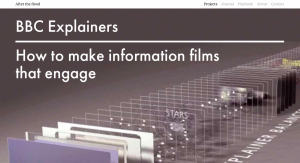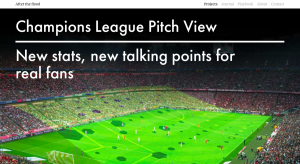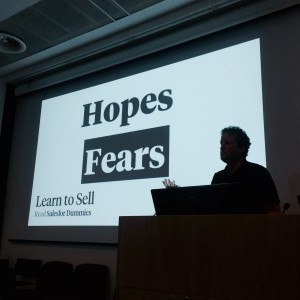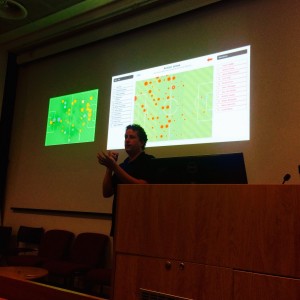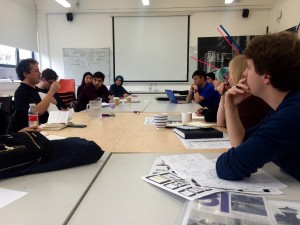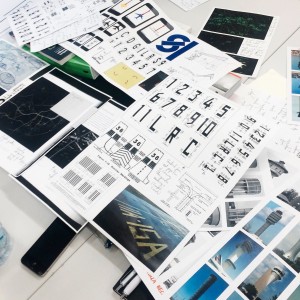Students on BA Graphic Arts were lucky enough to experience a fantastic presentation from leading data experience designer Max Gadney. Max is Founder and Design Director of ‘After the Flood’, a Data Experience Design company. They make apps, interfaces and videos that help clients communicate information internally or to their customers. Clients include UEFA, UK Prime Minister David Cameron, the World Chess Championships and BBC News. Max was previously responsible for the BBC website. He also hosts the yearly conference ‘Design of Understanding’ and writes on information design.
Max founded ‘After the Flood’ to make digital products that create “the entire data experience,” making not just the data visualisations, but the context for those visualisations – “the apps, web-sites and experiences that people access the data in.”
Their principles are to:
> Make digital products that show visual data.
> Look to uncover the hidden truth in data
> Design for users and not other designers.
Over one hour packed with insight, humour and extremely useful reference points, he let us into new areas of design that are emerging and evolving as a result of the growth of big data. Data design he said was about “Showing not telling” and “Exposing what is actually there” He talked about the importance of content & function “Its not just what the thing looks like, it’s what the thing does”
He showed the work of Palantir who create experiences related to security intelligence data. He talked about the growing importance of digital products and how designers increasingly need to create films that explain their projects rather than simply making the projects. He urged students to learn to sell and read, ‘Why we do we buy’ by ‘Paco Underhill. He stressed the importance of contextual research and learning how to talk to users. Designers he pointed out should “Be ignorant of the problem and have humility. Be curious.” And there should be “zero creative distance between the technology and the designer”. Like many of our speakers he stressed the importance of learning to use digital technology, asking the simple question, “If not digital why not?” He talked about selling, coding, risk & reward, T- shaped designers, designers needing to ‘understand what they like and are like’, working within parameters, drawing and the “need for designers to keep the dignity of themselves in what they do.”
After the lecture he kindly gave 1:1 critiques to students working on the National Air Traffic Control live brief. As he set off back to London, all agreed that it was an extremely enlightening and insightful morning.
http://aftertheflood.co
